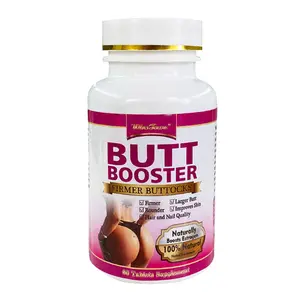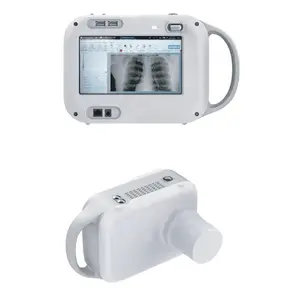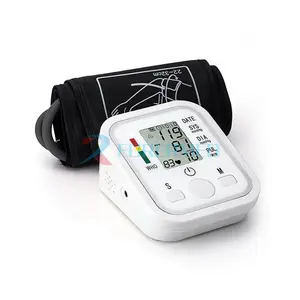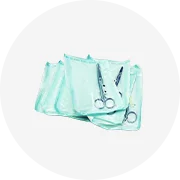Phổ biến trong ngành của bạn






Azdent chân đế chỉnh nha nha khoa kim loại tự ligating Chân đế với buccal Ống MBT 3-4-5 móc
13,00 US$ - 15,00 US$
Đơn hàng tối thiểu: 1 Gói







Tiantian nha khoa chỉnh nha Roth edgewise M 0.18 0.22 dấu ngoặc de ortodoncia odontologia niềng răng cho răng
3,50 US$ - 9,00 US$
Đơn hàng tối thiểu: 50 Bộ







Azdent chỉnh nha nha chân đế chỉnh nha tự ligating Roth Chân đế với buccal Ống Roth 3-4-5 móc
Sẵn sàng vận chuyển
13,00 US$ - 15,00 US$
Đơn hàng tối thiểu: 50 Gói







Trung Quốc Sản phẩm nha khoa odontologia materiales dentales Roth/MBT prewelded kim loại MOL ban nhạc nha khoa niềng răng chỉnh nha Bracket
24,00 US$ - 45,00 US$
Đơn hàng tối thiểu: 5 Hộp







Giá tốt nha khoa tungsten carbide burs endo Z burs zekrya burs
0,85 US$ - 1,20 US$
Đơn hàng tối thiểu: 50 Cái













Azdent sứ veneers đánh bóng nha khoa khoan đặt FG-105 Nha Khoa Kim Cương burs
Sẵn sàng vận chuyển
0,70 US$ - 0,99 US$
Đơn hàng tối thiểu: 100 Hộp






Hot bán CE & ISO tiêu chuẩn 10 cái azdent kim cương burs tốc độ cao hình dạng khác nhau phẫu thuật nha khoa kim cương BUR
0,15 US$ - 0,20 US$
Đơn hàng tối thiểu: 100 Cái
Vận chuyển mỗi chiếc: 0,49 US$












Azdent 10 cái vật liệu nha khoa FG khoan Fg-101 Nha Khoa Kim Cương mũi khoan
0,70 US$ - 0,90 US$
Đơn hàng tối thiểu: 100 Hộp






Azdent tốc độ cao Kim Cương burs với chất lượng tốt
Sẵn sàng vận chuyển
0,77 US$ - 1,20 US$
Đơn hàng tối thiểu: 10 Gói
Vận chuyển mỗi chiếc: 0,48 US$






10 cái/hộp Inlay chuẩn bị azdent Fg-104 Nha Khoa Kim Cương BUR
Sẵn sàng vận chuyển
0,70 US$ - 1,00 US$
Đơn hàng tối thiểu: 200 Hộp






AZDENT FG Nha Khoa Kim Cương Mũi Khoan Tốc Độ Cao Nha Khoa BUR với CE Được Phê Duyệt
0,70 US$ - 1,50 US$
Đơn hàng tối thiểu: 10 Gói






AZDENT Y Tế Tốc Độ Cao Nha Khoa FG Kim Cương Burs Nha Khoa Phẫu Thuật Burs 10 Cái/gói
0,70 US$ - 1,50 US$
Đơn hàng tối thiểu: 10 Gói






Mũi Khoan Nha Khoa Tốc Độ Cao Được Chứng Nhận CE Mũi Khoan Kim Cương AZDENT FG
Sẵn sàng vận chuyển
0,77 US$ - 0,97 US$
Đơn hàng tối thiểu: 10 Gói
Vận chuyển mỗi chiếc: 0,54 US$






AZDENT Ball Shape Nha Khoa Phòng Thí Nghiệm Kim Cương Burs Tốc Độ Cao Nha Khoa Siêu Thô
Sẵn sàng vận chuyển
0,77 US$ - 0,97 US$
Đơn hàng tối thiểu: 10 Gói
Vận chuyển mỗi chiếc: 0,54 US$






Dụng Cụ AZDENT Dụng Cụ Chỉnh Hình Răng Cưa Tốc Độ Cao Để Chuẩn Bị Răng Trước
Sẵn sàng vận chuyển
0,77 US$ - 1,20 US$
Đơn hàng tối thiểu: 10 Gói
Vận chuyển mỗi chiếc: 0,44 US$





Giá Nhà Máy AZDENT Dụng Cụ Phòng Thí Nghiệm FG Nha Khoa Diamond Burs Cho Tay Khoan Tốc Độ Cao
0,70 US$ - 1,50 US$
Đơn hàng tối thiểu: 10 Gói






Dụng Cụ AZDENT Không Gỉ Tốc Độ Cao Dental Bur Dental Diamond Burs
0,80 US$ - 1,50 US$
Đơn hàng tối thiểu: 10 Gói






Mũi Khoan Kim Cương Nha Khoa Giá Sỉ AZDENT Chất Lượng Cao
1,20 US$ - 2,50 US$
Đơn hàng tối thiểu: 10 Gói




Mũi Khoan Kim Cương Nha Khoa Tốc Độ Cao AZDENT Nhà Cung Cấp Trung Quốc
0,70 US$ - 1,50 US$
Đơn hàng tối thiểu: 10 Gói












Bộ Dụng Cụ Đánh Bóng Vai AZDENT Sứ, Mũi Khoan Răng Kim Cương Tốc Độ Cao
0,70 US$ - 1,50 US$
Đơn hàng tối thiểu: 10 Gói






AZDENT Nha Khoa Cung Cấp Hình Bóng Đá FG Kim Cương Mũi Khoan
0,70 US$ - 1,50 US$
Đơn hàng tối thiểu: 10 Gói












Nha khoa tốc độ cao Kim Cương burs nha khoa
Sẵn sàng vận chuyển
0,77 US$ - 1,20 US$
Đơn hàng tối thiểu: 10 Gói
Vận chuyển mỗi chiếc: 0,54 US$






AZDENT Giá Rẻ Giá 10pcs Phía Trước Răng Nha Khoa Kim Cương Burs Kit
Sẵn sàng vận chuyển
0,77 US$ - 0,97 US$
Đơn hàng tối thiểu: 50 Gói
Vận chuyển mỗi chiếc: 0,25 US$





AZDENT Crown Chuẩn Bị Răng Hàm Bộ Dụng Cụ Mài Răng Kim Cương 10 Chiếc
Sẵn sàng vận chuyển
0,80 US$ - 1,20 US$
Đơn hàng tối thiểu: 10 Gói
Vận chuyển mỗi chiếc: 0,48 US$






Giá Rẻ Nha Khoa FG Kim Cương Burs AZDENT Nha Khoa Burs Cho Tay Khoan Tốc Độ Cao
0,70 US$ - 1,50 US$
Đơn hàng tối thiểu: 10 Gói






Giá Tốt Nhất Nha Khoa FG Diamond Burs Nha Khoa Phẫu Thuật Cho Tay Khoan Tốc Độ Cao
0,70 US$ - 1,40 US$
Đơn hàng tối thiểu: 10 Gói






Dụng Cụ AZDENT Nha Khoa FG Diamond Burs Cho Tay Khoan Tốc Độ Cao
0,70 US$ - 1,50 US$
Đơn hàng tối thiểu: 10 Gói






Chất Lượng Cao Tốc Độ Cao FG Nha Khoa Diamond Burs/Bộ Sửa Chữa Composite
Sẵn sàng vận chuyển
0,60 US$ - 1,20 US$
Đơn hàng tối thiểu: 10 Gói
Vận chuyển mỗi chiếc: 0,44 US$






Dụng Cụ Nha Khoa AZDENT Dụng Cụ Nha Khoa Tốc Độ Cao Burs Nha Khoa Phẫu Thuật
0,70 US$ - 1,50 US$
Đơn hàng tối thiểu: 1 Gói



CE Phê Duyệt Mười Một Loại Tùy Chọn Tốc Độ Cao Nha Khoa FG Diamond Burs
1,20 US$ - 2,50 US$
Đơn hàng tối thiểu: 10 Gói






AZDENT Tốc Độ Cao Nha Khoa FG Diamond Burs Dùng Cho Nha Sĩ
0,70 US$ - 1,40 US$
Đơn hàng tối thiểu: 10 Gói












Dental Bur Tốc Độ Cao Dental Diamond Burs Để Chuẩn Bị Inlay
Sẵn sàng vận chuyển
0,80 US$ - 1,20 US$
Đơn hàng tối thiểu: 10 Gói
Vận chuyển mỗi chiếc: 0,44 US$






AZDENT Siêu Corse Nha Khoa Kim Cương Burs Tốc Độ Cao FG Nha Khoa Bur Khoan
0,70 US$ - 1,50 US$
Đơn hàng tối thiểu: 10 Gói












Phòng Khám Sử Dụng Cao Tốc Độ Nha Khoa Diamond Burs Kit Nha Khoa FG Burs Để Bán
Sẵn sàng vận chuyển
0,80 US$ - 1,20 US$
Đơn hàng tối thiểu: 10 Gói
Vận chuyển mỗi chiếc: 0,44 US$
Các danh mục hàng đầu
Giới thiệu về 10pcs azdent kim cương burs
Alibaba.com cung cấp các sản phẩm 58 10pcs azdent kim cương burs. Có rất nhiều 10pcs azdent kim cương burs lựa chọn dành cho bạn, chẳng hạn như thép, kim loại. Bạn cũng có thể chọn từ điện, hướng dẫn sử dụng, và máy móc 10pcs azdent kim cương burs. Cũng như từ class i, class ii 10pcs azdent kim cương burs.Và bất kể 10pcs azdent kim cương burs là iso, tuv.











